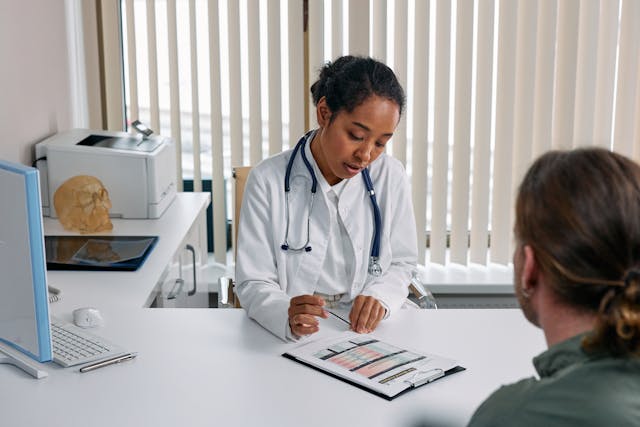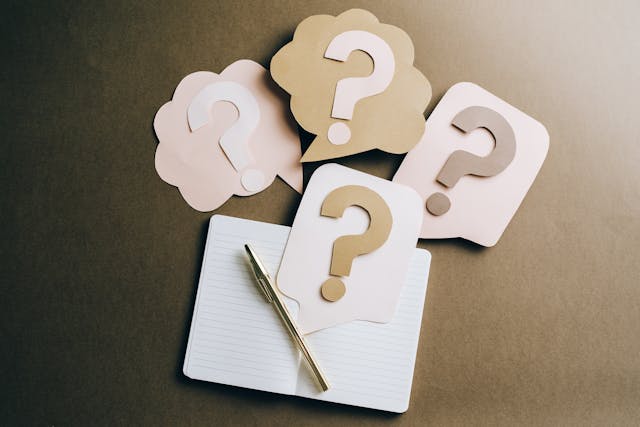Monthly Archives: February 2025
What to Expect During an Allergy Consultation
An allergy consultation is the first step toward identifying allergic triggers and developing a personalized treatment plan for long-term relief. If you’re struggling with persistent sneezing, nasal congestion, skin irritation, or unexplained coughing, it’s time to consult an allergy specialist. Whether you’re dealing with seasonal allergies, food sensitivities, asthma, or chronic sinus issues, understanding what to expect during your visit can help you feel more prepared and at ease.
Here’s a detailed breakdown of what typically happens during an allergy consultation — especially at a specialized clinic like Allergy, Asthma and Sinusitis P.C. in New York City.

Step 1: A Comprehensive Medical History Review
Your allergist will begin by gathering detailed information about your symptoms and health history. Be prepared to answer questions like:
- When did your symptoms start?
- Do they occur seasonally or year-round?
- Do certain environments, foods, or situations trigger symptoms?
- Are there any other medical conditions or allergies in your family?
- Have you tried any medications, and how well did they work?
The more specific you can be, the easier it is to identify patterns that suggest underlying allergy-related conditions.
Step 2: Physical Examination
A physical exam helps your allergist assess any visible signs of allergic reaction or inflammation. This might include:
- Checking your nasal passages for swelling or blockages
- Listening to your lungs for wheezing or breathing irregularities
- Examining your skin for rashes, hives, or eczema
- Evaluating your eyes for redness or puffiness
These observations guide your allergist in selecting the most appropriate diagnostic tests.
Step 3: Allergy Testing (If Needed)
If your symptoms suggest an allergic response, your allergist may recommend one or more of the following tests:
- Skin Prick Testing: Small amounts of allergens are applied to your skin to check for reactions.
- Intradermal Testing: Used when skin prick testing is inconclusive, involving slightly deeper injections under the skin.
- Blood Tests (IgE Testing): Measures your immune system’s response to specific allergens.
- Patch Testing: Used for contact dermatitis, where allergens are applied to patches placed on your skin for 48 hours.
Your allergist will determine which test is appropriate based on your symptoms, medical history, and current medications.
Step 4: Diagnosis and Explanation
Once test results are available — often the same day for skin tests or within a few days for blood tests — your allergist will explain:
- Which allergens you’re reacting to
- The severity of each reaction
- How your symptoms relate to the test findings
This explanation helps connect the dots between your daily experiences and the allergens affecting your health.
Step 5: Personalized Treatment Plan
Your allergist will create a treatment strategy tailored to your lifestyle and the type/severity of your allergies. This may include:
- Medications: Antihistamines, nasal sprays, inhalers, or epinephrine (for severe reactions)
- Allergen Avoidance Tips: Practical ways to reduce exposure in your home, workplace, and daily routine
- Allergy Immunotherapy: Allergy shots or drops that help reduce your immune response over time
- Asthma Management: If asthma is involved, your treatment will include proper inhaler use and monitoring plans
Education is a major component of your consultation. Your allergist will make sure you understand how to manage symptoms and when to seek emergency care.
What to Bring to Your Appointment
To make the most of your allergy consultation, come prepared with:
- A list of your symptoms and how long they’ve lasted
- Any medications you’re currently taking (including over-the-counter)
- Details about your living and working environment
- Records of past allergic reactions or previous test results
Wearing short sleeves can also make skin testing more convenient.
Next Steps After the Consultation
After your initial visit, your allergist may schedule follow-up appointments to monitor your progress, adjust treatment, or begin immunotherapy. With proper diagnosis and management, you’ll be on your way to living more comfortably — and symptom-free.
Schedule Your Allergy Consultation in NYC
If you’re ready to get answers and take control of your health, schedule a consultation with Dr. Boyan Hadjiev at:
Allergy, Asthma and Sinusitis P.C
Boyan Hadjiev, MD
30 East 40th Street
Suite 1200
New York, NY 10016
212-319-5282
Don’t let allergies disrupt your daily life. A professional allergy evaluation can provide the clarity and relief you’ve been looking for.
Exploring Advanced Allergy Testing Methods
In New York City, where allergen exposure is constant and varied, understanding advanced allergy testing options is key. Allergies can impact every aspect of your life — from what you eat and where you go, to how well you sleep. If you’ve been dealing with persistent symptoms like sneezing, congestion, rashes, or even digestive issues, pinpointing the exact cause is the first step toward effective relief. Fortunately, modern allergy testing methods have come a long way, offering highly accurate insights with less discomfort and faster results. Here’s a comprehensive look at today’s most effective testing techniques and what you can expect during the process.

Why Allergy Testing Is Important
Accurate allergy testing identifies the substances your body is reacting to — whether they’re environmental, food-related, or chemical. Once you know your specific triggers, your allergist can develop a personalized treatment plan, which may include medication, avoidance strategies, or immunotherapy.
Without testing, you’re left guessing — and often living with symptoms longer than necessary.
Advanced Allergy Testing Methods
Today’s allergy tests go far beyond the basics. Here are the most widely used and effective methods now offered in leading clinics:
1. Skin Prick Testing (SPT)
One of the most common and reliable methods for diagnosing allergies, skin prick testing involves placing tiny amounts of allergens just under the skin’s surface.
- What it tests: Common environmental allergens (dust mites, pollen, mold, pet dander) and some food allergens
- How it works: Allergens are applied to the skin with a small lancet. If you’re allergic, a small raised bump or redness will appear.
- Time to results: Within 15–20 minutes
2. Intradermal Testing
This method is more sensitive than the skin prick test and may be used when SPT results are negative but suspicion of an allergy remains high.
- What it tests: Primarily environmental allergens
- How it works: A small amount of allergen is injected just under the skin.
- Time to results: 15–20 minutes
3. Specific IgE Blood Testing
Also known as serum IgE testing, this blood test measures your immune system’s response to individual allergens by detecting allergen-specific antibodies.
- What it tests: Foods, environmental allergens, insect venom, medications
- How it works: A blood sample is taken and sent to a lab for analysis.
- Best for: Patients who cannot stop antihistamines or those with severe skin conditions
- Time to results: A few days to one week
4. Component-Resolved Diagnostics (CRD)
An advanced version of IgE blood testing, CRD analyzes specific proteins within allergens to determine the risk and severity of reactions.
- What it tests: Primarily food and insect venom allergies
- Why it’s advanced: Helps distinguish between a mild sensitivity and a potentially life-threatening reaction
- Best for: Complex food allergies and those considering immunotherapy
5. Patch Testing
This test identifies delayed allergic reactions that affect the skin — typically contact dermatitis.
- What it tests: Metals (like nickel), fragrances, latex, cosmetics, preservatives
- How it works: Allergens are applied to patches, which are worn on the back for 48 hours.
- Best for: Chronic rashes and eczema of unknown cause
Choosing the Right Testing Method
Your allergist will recommend a testing method based on:
- Your symptoms (respiratory, skin, digestive, etc.)
- Suspected triggers (food vs. environmental vs. chemical)
- Your health history, medications, and lifestyle
Sometimes, a combination of tests is needed to arrive at a precise diagnosis.
What to Expect During Testing
Allergy testing is safe, and while some methods cause mild itching or redness, most are well-tolerated. Preparation may include:
- Stopping antihistamines 3–7 days before testing (your provider will advise)
- Bringing a list of symptoms and suspected triggers
- Wearing comfortable clothing if skin testing is planned
When to Seek Advanced Allergy Testing
You should consider advanced allergy testing if you:
- Have persistent symptoms with no clear cause
- Experience frequent sinus infections, eczema, or unexplained asthma
- Suspect food allergies or intolerances
- Have tried over-the-counter medications without relief
Schedule Your Allergy Evaluation in NYC
If you’re struggling with undiagnosed allergy symptoms or want a more accurate diagnosis, advanced testing can help you finally get answers — and the relief you deserve. Schedule your evaluation with Dr. Boyan Hadjiev at:
Allergy, Asthma and Sinusitis P.C
Boyan Hadjiev, MD
30 East 40th Street
Suite 1200
New York, NY 10016
212-319-5282
Modern allergy testing is fast, precise, and a game-changer in helping you breathe, eat, and live more comfortably. Take the first step today.
Serving all of New York City and the Tri State Area including Zip Codes: Top Allergist NYC Midtown, Chelsea and Clinton: 10001, 10011, 10018, 10019, 10020, 10036 | Gramercy Park and Murray Hill: 10010, 10016, 10017, 10022 | Greenwich Village and Soho: 10012, 10013, 10014 | Lower Manhattan: 10004, 10005, 10006, 10007, 10038, 10280 | Lower East Side: 10002, 10003, 10009 | Upper East Side: 10021, 10028, 10044, 10128 | Upper West Side: 10023, 10024, 10025
